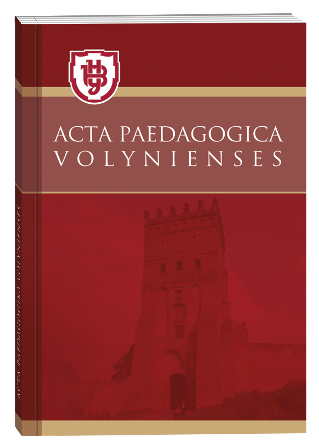PECULIARITIES OF FOREIGN LANGUAGE TEACHING TO AT-RISK STUDENTS
DOI:
https://doi.org/10.32782/apv/2021.6.24Keywords:
institution of higher education, foreign language, educational needs, teaching methods, sensory modes of teaching, forms of educationAbstract
Peculiarities of education of people with learning disabilities in higher education institutions are considered. Particular attention is paid to the problems of learning foreign languages. Features of disabilities in people with learning disabilities are revealed. The purpose of the article is to demonstrate the experience of a teacher from the Netherlands in the process of working with representatives of students with learning disabilities in order to further apply in the educational process of higher education in Ukraine. Methodology. Examples of different types of activities are given in order to identify disorders in students who do not differ in appearance from their peers without learning disabilities. The conditions in which there are disabilities that interfere with the normal assimilation of educational material by students with learning disabilities are highlighted. The author's method of elaboration of various aspects of learning French as a second foreign language by persons with learning disabilities is given. Examples of learning a foreign language using sensory methods are given: audio, visual, kinesthetic and olfactory. Selected types of educational activities are characteristic of each of these methods. This article emphasizes the importance of preparation for the learning process, namely: understanding the student audience, their characteristics, learning disabilities, etc., teacher’s analysis of the policy taking into account the capabilities and needs of students, organizing the learning process according to student needs, encouragement and motivation learning, identifying possible difficulties in students and finding ways to solve them. Scientific novelty. Special attention in this article deserves the organization of the teacher's lesson, identifying students' educational needs, choosing forms and effective methods, placing students in the classroom, keeping logs of communication with the teacher and receiving immediate feedback, systematic work on the course. Conclusions. The article provides recommendations for conducting foreign language classes for students with learning disabilities, especially for types of work, namely: group work, group questions, teamwork, use of cultural aspects in project activities, development of various tests and tasks and work with students to reduce their anxiety and security in foreign language classes.
References
Мартинчук О. Підготовка майбутніх педагогів до професійної діяльності в умовах інклюзивної освіти. Вісник психології і педагогіки : збірник наук. праць / Педагогічний інститут Київського університету імені Бориса Грінченка. К., 2012. Вип. 8. URL: https://www.psyh.kiev.ua/Мартинчук_О.В._Підготовка_майбутніх_ педагогів_до_професійної_діяльності_в_умовах_іклюзивної_освіти (дата звернення: 09.12.2021).
Миськів Л. Принципи, завдання та функції інклюзивної освіти як світової моделі соціалізації осіб з обмеженими можливостями. Європейські перспективи. 2013. № 10. С. 66–70.
Astin, A.W. (2016). The challenge to educational equity. In A. W. Astin (author), Are you smart enough? How colleges’ obsession with smartness shortchanges students (pp. 46– 67). Sterling, VA: Stylus.
Cook-Sather, A., & Bovill, C., & Felten, P. (2014). Engaging students as partners in learning and teaching. San Francisco, CA: Jossey-Bass.
Hideko Furukawa. “A Modified Spanish Sequence for Students with Language-Based Learning Disabilities.” Foreign Language Annals 42, no.1 (2009): 27–41.
Gardner, Howard. Intelligence Reframed: Multiple Intelligences for the 21st Century. New York: Basic Books, 1999.
Levine, Mel. A Mind at a Time. New York: Simon and Schuster, 2002.
Konyndyk, Irene Brouwer. Foreign languages for everyone: how I learned to teach second languages to students with learning disabilities, 2011.
Sparks, Richard L., “At-Risk Second Language Learners: Problems, Solutions, and Challenges.” Foreign Language Annals 42 (2009): 4
Samuels, D.R. (2014). The culturally inclusive educator: Preparing for a multicultural world. New York, NY : Teachers College Press.







